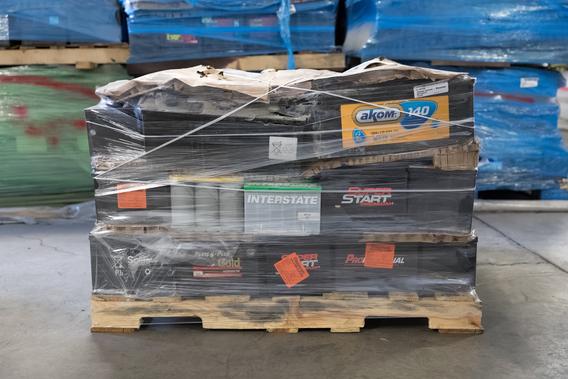We all know what it means when we start up our car – especially in the cold dark of winter, late for work – and get ‘click-click-nothing’. It’s a dead battery.
But here’s something to feel good about. The lead battery that makes your car go is almost 100 percent recyclable. In fact, more than 99 percent of all lead batteries are recycled and reprocessed endlessly.
When you bring your dead vehicle battery to a shop or store to get a new one, they’ll take the old one. Gopher Resource, with locations in Eagan, MN and Tampa, FL, recycle 25 percent of those old batteries in the United States.
Now, NRRI researchers are teaming up with Gopher Resource to make their recycling process even more sustainable.
Improving the Process
The process involves separating the plastic from the metals. The plastics get melted and beaded. The heavy metals are melted in a smelting process. Ultimately, both materials are sent to manufacturers for reuse in new batteries.

It’s the smelting that’s getting a fresh look. Through modern history the smelting process has used a type of fossil coal called “metallurgical coke.” With funding from the U.S. Department of Defense Army Research Laboratory, Gopher Resource is working with NRRI to develop a biocarbon replacement for the coke to reduce net Green House Gas (GHG) emissions.
“As an environmental solutions provider, we are very conscious of process waste, and have a number of projects to improve sustainability,” said James Dahlstrom, Gopher Resource senior director of engineering and Technology. “It occurred to us that only since the industrial revolution have fossil fuels been used for metal production. Historically, biocarbon was used to produce metals. The past had the answers!”
When Gopher investigated pursuing biocarbon as a non-fossil carbon reductant source, it was being considered in the iron and steel industry but not the non-ferrous sector. The company needed to develop a new product and found a partner and expertise at NRRI. Together they are working to develop the technologies and supply chain to sustainably supply modern metals production at scale.
Smelting furnaces are precisely controlled operations that require fit-for-purpose cokes with specific physical and chemical properties. The researchers will develop biocarbons that meet the needs of varying smelting operations.
“Our role is to figure out how to make biocarbon work for their process,” explained Eric Singsaas, NRRI Materials & Bioeconomy group leader. “We can densify the biocarbon with binding agents and give it the right chemical properties by optimizing the process conditions.”
This project is part of a larger program called “Materials Recovery Technology for Defense Supply Resiliency.” The goal is to help the United States become less dependent on foreign sources for critical metals needed to manufacture electronics and other high-tech products. Worcester Polytechnic Institute in Massachusetts is leading the overall program with dozens of companies and universities around North America. Gopher Resource is leading the effort to substitute biocarbon for metallurgical coke with NRRI.
Sourcing Biomass
Biochar – or biocarbon – is biomass charred in a low-oxygen kiln. It is a fine, black material that is about 70 percent carbon. Biochar is a sustainable low-carbon resource if it is made from waste or sustainably harvested biomass.
Of particular interest to Gopher Resource is using dying trees being removed and burned due to pest infestations such as the Emerald Ash Borer and spruce budworm, and waste from biofuel harvesting for power generation. NRRI has already demonstrated the use of spruce budworm-killed balsam fir – a wildfire hazard in northern Minnesota – as a biocarbon product. Other potential sources include agricultural residuals to materials diverted from landfills.
There’s also interest in the potential of NRRI’s InnovaTree™ – a fast-growing poplar that could be another reliable source of biomass and can be planted as a crop on marginally productive agricultural lands.
Lead Re-Cycle
The biocarbon project is one of multiple projects underway at Gopher Resource to increase battery recycling sustainability.
“Lead batteries perform well environmentally as the lead is captive within the battery, which is then recycled using the highest environmental containment standards,” explained Abbas Mirza, Gopher Resource senior R&D engineer. “We have a domestic lead supply chain in place with high recyclability, and for these reasons lead is a great choice for many battery applications.”
Gopher Resource was founded in 1946 in Eagan, Minn., and today processes about 25 million batteries at their two sites annually, producing about 300,000 tons of recycled lead.
PHOTO TOP: NRRI's Eric Singsaas and Brian Barry (left) talk with Gopher Resources James Dahlstrom and Abbas Mizia in a NRRI Lab.
